Wayne C. Allen's Blog, page 16
December 30, 2020
On Learning about Letting Go
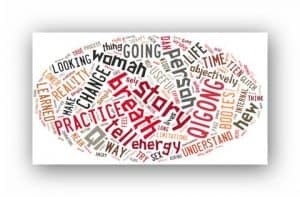
Letting go of the belief that the way you see things (the story you tell yourself) is either real or true is difficult–it’s the hardest lesson. It is when reality conflicts with the story, however, that a real opportunity for growth and shifting occurs.
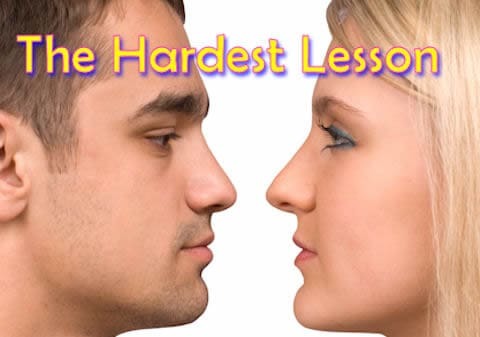 Dropping the Story… and the Blame
Dropping the Story… and the BlameGiven how 2020 went, a lot of people are questioning their beliefs, their goals, and their place in the world.
Or better, many are afraid of “what’s out there„, what’s next. So I decided to take this opportunity to discuss letting go, and “What’s going on.”
On both a theoretical and practical level, the only thing “going on” is what’s going on in you.
This is not an ego-driven statement—not meant to suggest that “your” way is the “right way.”
A client said, “Sure, we could get on the same page, so long as it’s her page.” This is NOT what I mean.
I used to tell my clients that the hardest thing they’d ever have to accept is precisely this:
What goes on for you, inside, is all you. All the time. Not true, not real. Just your story. So the big question is, is your story helpful, or useless?
We make comments to ourselves all the time
You can call the internal comments your story, or your narrative. It’s not true—it’s made up of fragments of experience, strung together like beads. You chose which things to notice (and add to the narrative) based on the story itself.
Our stories, left to themselves, are self-fulfilling prophesies.
Mostly, we have quite judgemental stories going on in there—most of us would never talk to another person the way we talk to ourselves. But somehow, we trot along, framing our lives through ridiculous narratives, until a difficult situation upsets our applecart.
The Glitch and Letting Go
Here’s a quote from a book called Language Structure & Change, by Efran, Lukens and Lukens, in a section entitled “The Meaning of Psychotherapy.”
In therapy, two or more individuals meet and form a novel coupling that enables them to carve out new distinctions. In the process, as we have noted, they breathe life into alternatives that had no previous existence. At its best, psychotherapy begins with a particular “glitch” in a client’s life and moves towards redefining and expanding the possibilities of living. (pg.197)
Our lives are made up of the “stories we tell ourselves.”
This idea comes from narrative therapy, which suggests that change comes from letting go of an inelegant story and replacing it with a more useful one—the “new distinction” of the above quote.
The “glitch” is the point we all reach when the story we are telling ourselves can no longer contain the present reality. At that point the choices are two:
Trying to force the new experience onto the “old page,” orletting go by writing a new page.
“When I look at our situation ‘objectively,’ I recognize it’s all your fault.”
The norm is to “judge the glitch.” Interior work is difficult—pointing a finger at the situation or the “other” is easy. A “cloak of objectivity” is thrown over the situation. “Why can’t you see this?”
Answer: they’re not you, and they have another story.
Let me give you an illustration.
 No one loves me like
I
love me
No one loves me like
I
love me“Sue” was widowed at age 35. Here is her reality: she was married for 10 years, and then her husband died.
Her internal theatre—her story, however, was not that simple.
Rather letting go of that story and writing a new one–perhaps a “Here I am, starting over,” story, she chose to try to maintain her old story (married woman) and also added in two other roles (widow, single woman.)
In her head, she was playing three characters—three wildly different characters–each with their own agenda.
there was the baseline, “married woman,” who wanted everything to be the way it was—she called this her “white picket fence story.”there was the grieving widow, whose default is “helpless, lonely, horny, in need of a shoulder to cry on, likely forever.”she was (in reality…) a single woman looking to have sex, date, flirt, have more sex.
As she had not shifted her internal theatre to match her new reality, the three characters were at war. They each had their own agenda, and there was nothing but confusion.
Here’s what happened, as she attempted to re-enter the world:
“The widow,” needed to be held and comforted by a man. She had never learned how to arrange for this with her male friends, so she met her need through barter.
“You hold and comfort me, I’ll return the favour with sex.” Since she thought she’d be grieving forever, she expected a long line of strange men to enter her life—as she bartered away her soul.
“The single woman” thought having sex was quite OK–she loved sex–but interestingly the single woman also had a trick up her sleeve. She only wanted to have sex with men who wanted a relationship that would lead to marriage. If she discovered (after the fact) that the person was not “into” marriage, “part of her” would declare that her latest round of casual sex was “wrong.”
“The married woman” popped into the equation, loudly expressing the opinion that, when “the single woman” had sex, she was cheating on her (dead) husband. So, she’d kick each guy to the curb before anything “serious” could happen, and crossed her legs. Tightly.
That is what a Glitch looks like
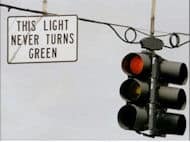
“Objectively,” pretty simple. “Sue” wanted to be held. The “glitch” arose when the widow and the married woman showed up on the single woman’s date.
Sue was trying to achieve something that her current story–her current self-definition–had no room for.
It was not her actions that were blocking her—it was her interpretations—the story she told herself—that got her into a pickle.
So, what did “Sue” do? She wailed, “It’s not fair! I shouldn’t have to deal with this!”
Nice, except that present reality is what it is.
Our work in therapy was to peel back the layers of her story. We explored how, by letting go, Sue might “be,” right here, right now, as “it” is.
Now, let me hasten to add that the goal of therapy (and life!!) is not to find the true story.
There is no true, “objective” reality. All there is is whatever story you are telling yourself—your story, and whether it’s useful or getting in your way.
If your life seems stuck, you must change your story by letting go.
Here’s a bit about how this works in a relationship:
A quote from Snow Crash, by Neal Stephenson. Let me set the scene for the quote.
The main character is a computer programmer named Hiro. In this quote he’s talking to a 15-year-old pizza delivery girl, Y.T., about his ex girlfriend—Hiro’s hoping to get back together with her.
We pick it up on page 409.
Y.T. says, “Did you hook up with your old girlfriend yet?”
Hiro: “No, but I have high hopes for that. Assuming I can stay alive.”
“High hopes for what?”
“Our relationship.”
“Why?” she asks. “What’s changed between then and now?”
This is one of those utterly simple and obvious questions that is irritating because Hiro’s not sure of the answer.
“Well, I think I figured out what she’s doing — why she came here.”
“So?” Another simple and obvious question.
“So, I feel like I understand her now.”
“You do?”
Yeah, well, sort of.”
“And is that supposed to be a good thing?”
“Well, sure.”
“Hiro, you are such a geek. She’s a woman, you’re a dude. You’re not supposed to understand her. That’s not what she’s after.”
“Well, what is she after, do you suppose …?”
“She doesn’t want you to understand her. She knows that’s impossible. She just wants you to understand yourself. Everything else is negotiable.”
(emphasis mine)
Again, it’s about letting go by figuring yourself out
A client reported 10 failed relationships in the past few years. He said, “I could always find something wrong with each of them. I’d wait for them to change, but they never did.”
My question was, “Wrong in comparison to what?”
Of course, the answer was simple. Wrong, in terms of who he thought they should be. Wrong, in terms of not meeting his fantasies.
I asked him what he did about the behaviours he thought were “wrong.” Did he talk with the woman about his concerns? He replied, “No. I go home and analyze the situation.”
I wondered aloud if he, as a part of his analysis, did the following: he first pictured his girlfriend engaged in the problem behaviour, then saw himself interacting with her, and then realized she’d never change. He said that this was precisely what he did, and that this made him sad, as he’d have to leave her.
He was stunned when I suggested to him that the entire process he was engaged in was simply him talking to himself.
His girlfriend is not in his head. The person in there is him, in drag, playing the role of his girlfriend.
Back to the idea of “objectivity.”
We desperately want to believe that we have infallible memories and make totally impartial judgments. In “truth,” our “memories” change all the time and are extremely inconsistent and unreliable. And our judgments are all about making what we see fit what we expect to see.
When we experience another’s actions, we don’t simply experience the event. We interpret it.
This means we make a judgment about their intent.
“She’s looking at me like that (the experience) because she hates me. (the judgment).”
What we’re doing is looking at the screen inside our heads, punching the “match expression” button, and in the blink of an eye, we’re looking at similar expressions, to which we have already attached meaning.
Each of those events, however, are in our memory bank because we placed them there using the same process.
Typically, the judgement and then the connection was made internally, without ever checking with the other person.
Another part of the “internal judgment” process is observing another’s behaviour and thinking, “What would I mean if I did that?”
Lets take an example. Stanley yells as Susie enters the room. Susie goes inside and instantly realizes she yells in that tone when she’s angry.
She replies, voice on edge, “Stop yelling and tell me why you’re angry with me.” Stanley looks confused. He says, “I wasn’t yelling at you, and I’m not angry. I’m frustrated that this light switch won’t work.”
Susie says, ” I hate it when you yell at me and won’t admit you’re angry.”
We all know where this is going.
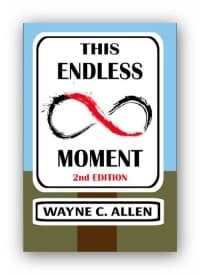
Note: If you want to learn more about this topic, and want to look at it from a Western perspective, have a look at my book, This Endless Moment.
To get back to the Snow Crash quote: What an amazing world it might be if we stopped trying to figure everyone else out, (internally, of course, without asking the other person) and simply concentrated on letting go and figuring ourselves out.
Y.T. is right. The wise soul simply observes what she is doing, and in that process get to know herself. Everything else is negotiable. From a place of self-knowing, there can be an invitation to dialog, to sharing, to admitting what we’re doing.
Imagine what might happen if you say,
“So, I’m confused. I just saw you do (whatever) and I went inside and judged that you were (whatever) and I notice that I’m scaring myself (or making myself angry, or I’m getting ready to leave, whatever) and I’m wondering what’s going on for you?”
You will notice that the language is “I” language.
The person speaking is reporting her experience. She is admitting to the judgments she is making as she pretends to understand what the other person “meant.”
Having done that, and here is the mark of wisdom, she also admits that she doesn’t have a clue as to what is going on for the other person, so she asks.
Now, she may discover that her perception and judgment were accurate. By asking what is going on for the other person, however, she has moved from a “You did too!” “I did not!” kind of confrontation to an invitation for her partner to explore what is going on for him.
In the end, we are self-defining creatures.
We create our reality through our stories—and do so all the time. As does everyone we come in contact with. And then we pretend we “understand.”
The key to a successful, wisdom-filled life is to admit the existence and prevalence of our fantasies. We live in a world we create; we establish the rules and the boundaries, and then we try to make others play by our rules. And all the time, they’re doing the same to us.
This is what the authors of Language, Structure and Change are getting at. Note the idea of “expanding possibilities.” They mention “alternatives that had no previous existence.”
They are suggesting, as am I, that far from there being limited choices in life, the limitations we find ourselves confronting are constructions, determined in advance by the stories we tell ourselves. Or, as the expression goes,
“Argue for your limitations and they are yours.”
We have the potential, in dialogue, to examine and re-examine the stories of our life. We can listen to what we tell ourselves, how we describe our situation, and we can understand that, far from seeing our lives objectively, we see them “objectively,” and find ourselves living self-fulfilling prophecies that are limiting and limited in the extreme.
Stuart Wilde coined the term “fringe dwellers” for those who understand about “objectivity” and personal responsibility.
Self-responsible fringe dwellers don’t try to change others. They observe and change the stories they tell themselves.
Experiment with waking up to your own stories, determining what you believe and how you act—wake up to how you limit yourself.
We encourage you to find “alternatives that had no previous existence.”
And then, drop us a comment and tell us about it!
December 15, 2020
Season’s Greetings Gift

I have 2 booklets, Half Asleep in the Buddha Hall and This Endless Moment 2nd. edition on a site called Smashwords. They do a nice job of promoting downloadable books.
They’re running a promotion for the holidays.
I added all 4 items to the promotion. From now until January 15, you can have any or all 4 downloadable ebooks for FREE!
Just go here, (https://www.smashwords.com/books/search?query=%22Wayne+C.+Allen%22) and click on any or all. A code should be applied to make the item free. If not, the coupon code is: LN94J
The best of this Season to you and yours!
Wayne and Darbella
December 11, 2020
On NOT Going Home For the Holidays

Going Home for the Holidays? Nope. Just stay away from the crowds, eh?
Maybe next year…

Psst!! Hey!!!
Want more great writing designed to help YOU to shift your behaviour?
Want to learn how to find, build or deepen your principal relationship?Want to know more about Zen living and being?Want to learn how to find, build or deepen your principal relationship?
Check out Wayne’s books!!!
So, what might you do for yourself this year? Or for yourself and your home circle? Here are a few ideas.
I suspect none of us are going to forget 2020. Masks. Isolation. Thousands upon thousands of deaths, millions afflicted. And “stay at home” suggestions that sane people take seriously.
Usually at this time of the year, I write about surviving the dramas that going home for the holidays typically generates. This year, a few self-care suggestions you can do at your own home.
1. Examine your pictures
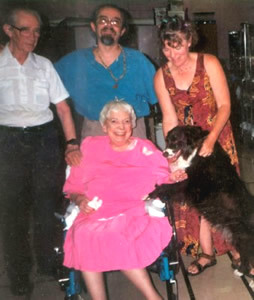 The Allens, a MacNaughton, and Jazz, 2000
The Allens, a MacNaughton, and Jazz, 2000No, really. Go through old photos, either low tech (photo albums) or on the electronic device of your choice.
Take a look at photos of the people you would normally spend time with.Also have a look at “oldies,” featuring those who are no longer with you… whether dead or moved on to greener pastures.Lastly, dig up photos of you… from when you were hatched to today (do the same with photos of your significant other — if you have one…)
Let your eyes flow over all those faces, all those situations.
Pay attention to the stories that pop into your head. Likely,
many of the stories will be “inflated…” stories you designed to create warm, fuzzy feelings.Others will be “conflated…” stories you designed to confirm your worst thoughts about the person featured.
Because, and this is the point of the exercise, all of the stories between your ears are put there… by you! There’s nothing real or true about your stories.
That’s how drama happens at family gatherings, as people argue over the “truth” of their version of past events.
For now, just let your stories be, and have a breath.
The thing to “get” is how easily the stories pop up, and how, if you decide to, you can choose to focus on one story (go ahead! Pick one!) and really flesh it out. But notice how inflated or conflated it is… how, the more you focus in, the more guesses and judgements pop up.
It’s just what minds do.
Now, have another breath.
Let go of the stories and judgements, and have another look. This time, pretend you’re looking at strangers… or pretend you’re looking at someone else’s family.
Don’t try to do anything… just look.
This is how we start noticing our story-making, and how “judgey” we are. It’s how we notice our unreal expectations.
For example, family dinners with Darbella’s family is decidedly different from my memories of Allen family dinners. And of course since different people were involved…
But judging one gathering “good” and one “bad” would be silly, as it’s based not on reality, but on inflated or conflated memories that only exist in my head.
This season, practice seeing your stories as just that… stories. Not true, not false, not good, not bad. Just inventions designed to put things in boxes.
Breathe, relax, and work on letting one or two go!
2. Try a little tenderness
 Grinch Much?
Grinch Much?Some decades ago I briefly counselled the mother of a friend of ours. She really didn’t like her husband, and especially didn’t like him around the holidays.
She had all kinds of stories about how, every year, he “ruined Christmas.”
My favourite: she told me that he was, as we were talking (it was October…) at home, putting up the Christmas lights. She said. “He always puts them up wrong, just to spite me and ruin Christmas!”
I said, “Why don’t you go home and help him by telling him what you want him to do?”
Silence, with a glare.
Then: “I’ll be damned if I’ll tell him. We’ve been married for decades, and he should just know what I want!”
Well, no. Not unless you want to keep your story going.
And the kicker: she had never, not once, told him what she wanted. Because she was deeply invested in blaming him for her self-inflicted pain.
Many of us do the same.
We have mucho invested in how hard-done-by we are. Evidence to the contrary is ignored or demeaned.
Because… poor me!
Tenderness isn’t just for meat anymore. Give the drama and “poor me” a rest. Ask for what you want, without judgement or rancour. If person “a” won’t or can’t do what you ask for… wait for it… ask someone else!
This Season, create a drama-free zone. Then, keep it all year!
3. Develop Your own Holiday Traditions
 Even a blurry one…
Even a blurry one…Since this year is not a great one for going home for the holidays, see about setting up one tradition for your principal family (with your partner/spouse, and your kids, if any.)
And pledge that next year, if you don’t much like your Home for the Holidays trip, you’ll shorten it, eliminate it, book a trip elsewhere… in short, change it.
In my family of origin, by the time I was a teen I was expected to help out with family dinners. In Dar’s family, not so much. My 30-something niece and nephew and their significant others mostly just sit there. And don’t get me going on my brother-in-law…
But see? There it is. Everyone gathered, repeating the past, and me, wanting to grouse about it.
Another option, which will happen eventually anyway, is for the next generation to start planning their own events. You know, their own dinner parties, featuring them… doing all the work.
Stop looking backward and trying to recapture or repeat something. Instead, create ceremonies, activities and timetables that are meaningful for you today.
Your task is to create a memorable life, for you. This requires actually doing something different.
4. Take it Easy, Baby

Since you’re staying home this year, how about using this time for reflection and renewal?
There used to be a Zen Centre in Buffalo that Dar and I drove down to as often as we could.
One thing they had was a Buddha’s Birthday meditation session December 8. We went, and sat for some hours.
Best gift I ever gave myself. Quiet time, reflective time. A chance to wind down, as opposed to the endless tearing about that the holidays seem to engender.
Not sure how our lives turned into an endurance contest, but hey… you can call a halt by calling a halt. Take a break… take some time for yourself. If it doesn’t all get done, who cares?
Here’s a beginner’s meditation video… featuring me!
Want more? Check out Half Asleep in the Buddha Hall for more on Zen living, and Living Life in Growing Orbits for daily exercises you can do for the next YEAR!
5. Deepen, Deepen
This season is either a thing to be endured, with a fake happy face, or a time of reflection, self-knowing, intimacy and sharing — a deepening. You pick. You choose.
All moments are bare of meaning. We add meaning. Or, we go brain dead and numb and run (literally and figuratively) ourselves ragged as we attempt to avoid the pain we create.
Instead, capture this season and make it your own. Provide meaning to everything you do, real meaning, meaning significant to you. Use this time to deepen your commitment to your spiritual path, and to find more groundedness. This opportunity exists in each moment, and it’s up to you to use it.
In the end, your path is yours, and you make of it what you will. Strive for more depth, more understanding. Bring yourself back to bare presence. Invigorate and enliven yourself.
Celebrate the gift of living and being!
December 2, 2020
Ceilings and The Dynamics of Depression
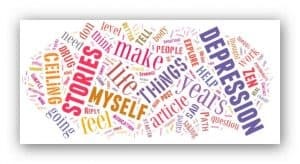
Ceilings and The Dynamics of Depression — depression is simply a label, and for most of us, not a helpful one. Let’s explore depression and see if there’s a link between negative stories and depression.
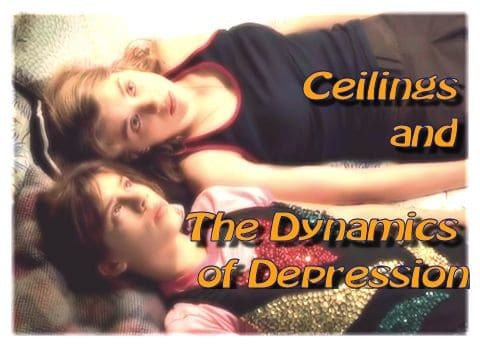
So, I received a question:
“Recently started to follow your blog. I’ve been interested in Zen Buddhism for many years and enjoy your writing.
You frequently ask about suggestions on subjects, mine is depression. I’ve suffered it most of my life. Is this another series of stories that we tell ourselves?”
Delighted to make this our topic!
There are several things here. A little medical talk, a bit of autobiography, a slice of Zen — and we’ll see where we come out.
Medical

We need, first of all, to differentiate between brain science and what the drug companies want us to believe.
There was an article some years ago, Newsweek, I think, that talked in glowing terms about how science was on the verge of being able to create designer brain drugs. All was going to be immediately fixable!!!
Two decades later, not so much.
Some years back, a researcher in Europe examined depression drug studies (Paxil, Prozac, etc.), and… shocker! Anti depressants are 2% more effective than placebos! In other words, they don’t work.
This is predictable, as much of what we call depression is actually not a brain chemistry issue, but sadness writ large.
Sounds so much more dramatic to be depressed than sad, though.
There’s likely 8% of the population that has significant brain chemistry issues — enough to need some form of medication.
Back in my youth, what is now called Bipolar Disease was called Manic-Depression. Treated, back then, with lithium. This is “true depression.”
One family friend was a classic “sufferer.” When in his manic stage, he was one of the best sales guys for Prudential Life Insurance. He’d bring home strangers, feed them, play pool with them. He’d figure, “I’m cured!” and stop taking the drugs. Next thing you knew, he was strapped to a gurney in a hospital. Went on like clockwork, his entire adult life.
This is the real thing. Not, though, what most people, including me, label depression. read on!
History
 Blue, blue, my world is blue…
Blue, blue, my world is blue…I had what I refer to as a depression, back in 1978. Sat in a reclining chair for 3 months, barely speaking, barely interacting. Almost non-functional.
BUT, I would say that it was not a true depression, as in something treatable with drugs. I was as miserable as I have ever been — and I also am painfully aware of how I cooked up the drama, and kept myself in it, plastered to that damn recliner.
After a couple of months, I decided to change what I could change — my behaviour — my actions.
I decided that my career as a photographer was over, and that I should get another degree. So, I went back to school, and became a minister. (Only a “depression” could lead to that choice, he says with a shudder…)
I followed that one up with a degree in Counselling.
I wrote a booklet, called “The Watcher,” to detail my process for dealing with depressive thoughts. It’s 99 cents, and available for download.
I made a decision about myself, and that decision was that my base-line personality is “not happy.”
A few years back, I read something from Pema Chodron, where she described herself as a “cheerful melancholic.” I thought that perfectly described me.
What I have learned, over the years, is that there is no altering one’s baseline “self.”
How we are, at several levels (things like mood and temperament, levels of pain tolerance, our place in the introvert — extrovert scale, etc) — these things are fixed — perhaps at the cellular level.
This is what brain scientists are attempting to “fix.” So much so that they’re doing clinical trials on a drug designed to “erase painful memories.”
I can see where that one is going. Who gets to decide what gets erased? Your doctor? The local Q‑Anon crowd?
We need to stop expecting drug companies to fix us.
It is no coincidence that, every time a study for a new “mind altering drug” comes out, the closing paragraph reads, “10–13 sessions of talk therapy is just as effective.”
Talking things through, getting a handle on the games we play — stunningly effective!
Here’s the Zen part
It is all about focus, as in, what we choose to “look” at.
 There are always better things to focus on than the ceiling
There are always better things to focus on than the ceilingI was watching the French movie, “Water Lilies” the other day. The protagonist and her girlfriend are lying in bed, staring at the ceiling.
The protagonist goes off on a “French-movie-like” speech (they have to have a philosophical nugget to be a French movie…) about ceilings, and how
“The ceiling is probably the last thing most people see” before they die.
She went on about her guess that 90% of people die staring at the ceiling (as opposed, one thinks, to staring into one’s lover’s eyes…) and that the last thing you see is imprinted on your retina.
“Imagine the number of people with ceilings in their eyes.”
What you focus on becomes your reality, plain and simple. And the way we get lost, and end up focussing on the “ceiling,” is through our story-telling.
The question that kicked this article off alluded to this. Is depression a “series of stories?”
Zen, in a sense, would say “Yes, and so is everything else that is not ‘real.’”
Real is what is right in front of you, and sometimes, real is sad, heartbroken, angry, shut down. In other words, just what our society tells us we ought not to be.
Here’s how it plays out: we feel what we feel, and rather than keep it simple, and say, “Boy am I sad,” we think we are compelled to justify the feeling (any feeling.)
We invent “evidence” to support how we are feeling.
My personal favourite stories are variants of
I’m all alone and no one likes me, and I’m a failure, and it’s all my fault.
Now, I could tell you a story about growing up a favoured only child, and how I was treated as being superior to everyone, how I never learned to fail gracefully, etc. But they’d just be stories to support my stories.
In truth, when things don’t go my way (my story of how things ought to go,) I sadden myself, and sometimes anger myself. The anger comes out as, “I quit. I’m going to take my marbles and go home.”
I quickly head to the whole poor, unappreciated Wayne thing. I have been doing this since I turned 18.
If I let myself, one story builds upon another, and soon I’m recalling other times I’ve felt hard done by. In 1978, I pushed this drama so far that I ended up in the reclining chair.
These days, I find I’m not interested in my stories, at least not for very long
Sure, because my nature is melancholy, I see shades of gray where Darbella sees fuchsia. The standing joke in Costa Rica was, Dar would say, “Que tal?” (how are you?) and I’d mostly reply, “Mas a menos,” (more or less — meaning OK-ish) while she mostly was “Muy bien” (great!)
Zen teaches us to simply observe — the feelings that arise, the stories we tell — and to let them drift past like clouds. Not easy, which is why meditation helps to get your ass settled down for the show.
You learn to watch without freaking yourself out — without adding another layer of story to defend what you do not want. You begin to explore the stories, to dissect them, to see them as simple mental games, and as you see this, you can choose to let them go.
Yes, choice
Being a sad-sack, a poor, helpless victim, is popular in our culture. And being depressed has cachet — better than, “I just decided to make myself miserable and then blame you!”
To admit you are blue, sad, angry, bored, etc. takes courage, as you will face the question, “Why?”
“Because it’s my nature” will cause others to, at least, raise their eyebrows.
But this is the case. What I feel is what I feel, and has nothing to do with the explanation I create. This is why, when confronting the same situation, 2 people react or respond differently. It’s not the situation — it’s the baseline personality and the stories.
I’m not making light of depression… true depression is debilitating.
I’m simply stating that most people who are sad are not depressed. I no longer find it helpful to claim depression, even though my behaviour was classic depression. The label leads in strange directions.
Instead of labelling, have a look at your patterns.
What stories do you tell yourself, which are designed to make your present situation into a curse? How do you build upon what’s happening right now, (instead of simply dealing with it…) and end up with a life story that leads into a hole? Who do you blame, and what do you gain, by the repetition of the theme?
Explore your options, including accepting that maybe you’re just not wired to be “happy.” You likely, as I have, can find solace in contentment, while not freaking out that you’re often blue.
It’s not “about” anything. Accepting that, you, as I do, can make better, moment-by-moment choices to continue to engage fully, instead of running away, blaming, or sitting in a green Naugahyde chair.
Because while who we are at our cores is fixed, there’s always this moment… and choice.
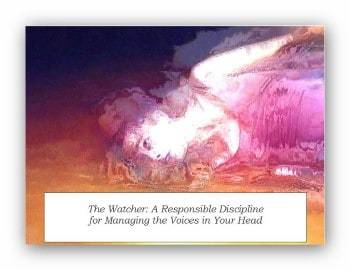
Check out my booklet, The Watcher,” available for 99 cents. You’ll learn how to set up a Watcher voice to help you settle yourself when the voices in your head are giving you grief.
November 16, 2020
Setting Boundaries

Setting Boundaries — one source for stress is a lack of boundaries, AKA the inability to say no.

Psst!! Hey!!!
Want more great writing designed to help YOU to shift your behaviour?
Want to learn how to find, build or deepen your principal relationship?Want to know more about Zen living and being?Want to learn how to find, build or deepen your principal relationship?
Check out Wayne’s books!!!
What Are Boundaries?
Personal boundaries are emotional, physical, and mental limits that we establish. Boundaries differ from person to person, and are:
based on one’s needs and desiresdesigned to protect him or herself from being used, manipulated, or even violated by others.
Setting boundaries is a personal responsibility, rooted in self-care and a desire to cultivate well-being. The premise is that no one and nothing can hurt you if you don’t allow it.
Please note that last clause: “…if you don’t allow it.” The only exception to this rule is physical assualt, which you may or may not be able to “stop,” depending upon your physical abilities. All other forms of “broken boundaries” happen because they are “allowed” to happen.
Boundaries are commonplace.
Countries have borders, homes have fences and doors, and offices are either separate rooms or cubicles which serve to maintain security and a sense of privacy.
Personal boundaries can serve us in the same ways.
Boundaries are crucial to healthy relationships, a healthy self, and a healthy life. Setting and sustaining boundaries is a skill that many people have not learned or mastered, but is essential for general well-being.
Boundaries are wide and varied:
Saying no to a friend who requests a favor that will infringe on your own well-beingEstablishing clear limits as to what you will or will not do in order to protect your health and sanitySetting rules and ensuring your kids follow them while living at homeSetting limits within a romantic relationship as to what behaviours you will allowBoundaries can also involve a personal decision as to how much you will tolerate in any given situation–for example: needing to take a time out during an argumentSetting emotional expression limits to protect your emotional healthNot doing things you don’t want to do or like to do just because someone else wants toSetting time for work, and making sure that work does not interfere with family and leisure timeAnd, of course, setting limits in order to reduce stress, overwhelm and burnout
In essence, personal boundaries provide you with security and safety; they are your armour in ensuring self-care
It Is Not Selfish To Take Care Of Yourself

This is something we must realize when we want to learn to set boundaries and understand our limits. For many this is an obstacle.
Why are your needs any less important than those of others?
The belief that self-care is selfish is a false one. No one else can take care of you but you. No one else but you can understand and identify what impacts your well-being, sanity and stress levels but you.
When we put the needs of others before our own… we compromise our well-being, and this places an undue burden on ourselves and our relationships.
When we learn to say no, (or to set limits on what we will tolerate so as to not compromise our own personal values, needs and desires) we develop self-care, and this is the linchpin for reducing stress and living the lives we were meant to live.
How Boundaries Help You Manage Stress
The skill of setting boundaries is one of the most effective stress management tools. There are several reasons for this:
First, without boundaries you are likely to be running around doing everything for others, without taking care of your own needs. This is profoundly and fundamentally stressful. The lack of understanding your own needs, desires and limits makes it difficult to take care of yourself, and without self-care, stress is bound be rampant in your life.Second, without boundaries it may seem that others are taking advantage of you, which can cause immense mental and emotional stress.Third, the lack of a comfort zone (which is provided by setting limits) can make it seem that you are always living on the edge, without a safety net. This leads to stress and its consequent responses in the body.
Key Considerations In Setting Boundaries
Set and understand your limits — in order to have healthy boundaries, you must know where you stand. This means that you must identity your limits: emotional, physical, mental, and spiritual. Boundaries mean limits, and this means that you must be aware of what you can tolerate without stress or discomfort.Self-care is at the core of boundaries — boundaries are individual and personal choices that stem from and support the need to take good care of ourselves.What makes you uncomfortable may not be uncomfortable for others. This can become an obstacle, as others may exert pressure to “persuade you” to change a boundary.Self-awareness — setting boundaries requires a deep level of self-awareness and honoring of our own feelings. For example, a friend calls and says she needs you to babysit, but you are exhausted and have had a long week, and were planning to just relax. At this point it is crucial for you to identify your fatigue — and your own needs — and not say “yes” — even though this will put your friend in a bind.Deal With Personal Challenges — self-doubt, guilt, and fear are all potential pitfalls when it comes to our health, well-being, and how we set limits.We may be fearful of how the other person will respond, or imagine they may not like us if we say “no” to them.Guilt often prevents us from saying “no” and setting limits because we feel it is our duty to be helpful, to take care of others; to be good parents, friends, and lovers.Doubting if we are deserving of the self-care that boundaries provide is another challenge that results in our doing more than we want to or are able to. This self-doubt results in us putting the needs of others before our own.All of the above are issues that place focus on the other person rather than ourselves. They must be addressed before we can move forward to setting healthy boundaries. The truth is that letting self-doubt, guilt and fear make the needs of others more important than our own is a recipe for disaster.Discomfort and Resentment —Discomfort stems from doing or acting in a way that is beyond our comfort level. While learning to stretch out boundaries (another article!) is important, one has to have boundaries to begin with! Pressing against a boundary always results in discomfort.Resentment occurs when you do not think you are appreciated or you think that someone is taking advantage of you. This occurs when we push ourselves beyond our own limits, (typically when we want to be good friends, wives, husbands, workers, daughters, sons, siblings and parents and we don’t want to say “no”.) Ironically, the resentment is misdirected, as it is you who has allowed yourself to go beyond your own limits, since no one can make you doing anything that you don’t want to do.Being Direct — one of the key skills in setting boundaries is the ability to be direct with the people in your life. This means learning to say “no”. Saying “no” means using different communication styles with different people, but no matter who you are dealing with — be it parents, kids, friends or your spouse — setting boundaries requires a clear-cut and direct dialogue.The Caretaker Syndrome — how you were raised can be a significant obstacle in setting boundaries. If you were taught to be a caretaker, and your family placed undue expectations on you when growing up, then ignoring your own needs is likely to be your norm. Consider all your relationships; is there a healthy give and take?
Some Ideas to Help You Start Setting Boundaries
Make Self-Care A Priority — Making self-care a priority requires that we give ourselves permission to put ourselves first, which motivates us to set clear and healthy boundaries at work, at home and in social situations. Self-care also means recognizing that your feelings are valid — and these feelings serve as essential cues about your happiness and contentment.Be Assertive — it isn’t enough to create boundaries, we need to follow through. Even though we know intellectually that others aren’t mind readers, we still expect them to know what we want, what we hurt our feelings over, and what infringes on our limits. But, of course, they don’t know and they are not mind readers! It is critical that we assertively communicate with others about our boundaries, and let others know when they have crossed them — all in a respectful way.Let Go — of course, there will be people who will not understand or respect your boundaries, and they will continue to try to infringe upon them. Being proactive in your self-care likely will mean letting these people go, in order to remove toxic relationships from your life.Get Help — you may need professional help to learn how to be comfortable with setting boundaries and with self-care in general. A good therapist can help you to get in touch with your issues, so you can be more present for yourself.
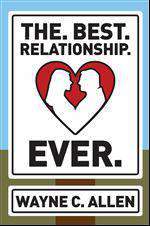
Note: And if your present relationship needs work, well… check out The. Best. Relationship. Ever. It’s my relationships book… you’ll find all the help you need!
How To Establish Personal Boundaries
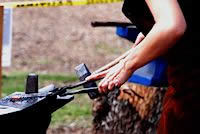
Boundaries are crucial to living a healthy life. Specifically, when thinking about reducing stress and risk for burnout, boundaries can save you the serious consequences that these situations can bring.
For anyone accustomed to being compliant and accommodating, the process of implementing boundaries may feel unnatural at first, or downright awful. However, as you stand up for yourself and your boundaries, you will feel increased confidence and empowerment.
Steps To Setting Personal Boundaries
Define
Write down how you have allowed other people to manipulate you, and how you have gone along with situations that are not acceptable to you.
Make a “boundary list” made up of things that others may no longer do to you, do around you, or say to you. List your values, your outlook on life, and your belief system.
Change Your Mindset
Start with the mind shift that having personal boundaries is good for you — that it does not mean that you are selfish or don’t care about others. Recognize that your self-worth is key to managing your well-being and avoiding stress, burnout and overwhelm. Realize that you are not defined by the acceptance of others.
Learn To Say No
Learning to say “no” is key to having healthy boundaries. We are able to better manage stress and avoid being burned out and overwhelmed.
If you have been a caretaker or a “yes man/woman” your whole life, it will be a foreign thing to say “no”, but you have to start somewhere. As you say “no” more often, be mindful of and note the rewards of self-care — this will motivate you to continue.
Expect Discomfort
You can expect that the “boundaries conversation” you have with others will feel difficult and uncomfortable, especially if you have been a people-pleaser. There may be some push-back and defensiveness from some people who have formerly “pushed your buttons.”
Be aware that some people in your life may fall away as a result of your new outlook, but these are not the kind of people you want in your life anyway.
Whatever you do, don’t compromise your values, self-respect, and dignity just to keep someone in your life. You just can’t sustain that.
Reinforce
It may take some time to train yourself to enforce and reinforce your boundaries. Create a plan for those times when someone actually crosses your boundaries. Tell them what they are doing. Ask them to stop right away.
Be Flexible
There is a big difference between rigid and healthy boundaries. Boundaries are fluid and can change over time and in different circumstances.
To use our previous example, with a twist: if a friend calls and asks you to babysit so they can go out to a club when you have made other plans or just want to relax, that’s one thing.
It’s quite another if they have a medical emergency and really need to leave their kids. At this point, it would not be unreasonable for you to say “yes”. As you gain confidence, you will know how and when to bend your boundaries.
Be Patient With Yourself
Realize that this skill will not be perfected overnight, especially if setting boundaries is something that is new to you.
Start to become aware of, challenge and recognize the hidden beliefs that undermine your setting of boundaries. Make sure to always be clear about your boundaries, even when you are uncomfortable.
Believe In Yourself
You need to believe in your value as a unique individual who is worthy of self-care, calm and peace. Trust your feelings and instincts about what you don’t and do want in your life.
No one knows you or your needs better than you do. Never allow others to set your boundaries for you. You need to practice self-respect until it feels natural — setting boundaries is a good way to practice this.
November 2, 2020
Appreciating Life
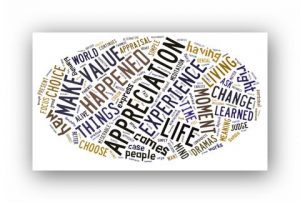
The art of appreciating life is seldom practiced. I suspect this is so because appreciation actually contradicts our belief about how much is ‘wrong’ with life.

Psst!! Hey!!!
Want more great writing designed to help YOU to shift your behaviour?
Want to learn how to find, build or deepen your principal relationship?Want to know more about Zen living and being?Want to learn how to find, build or deepen your principal relationship?
Check out Wayne’s books!!!
I decided to publish this the day before the elections in the good ole US of A. (Slight sarcasm there…)
Either 4 more years of the “vulgar talking yam,” or 4 years of “Grandpa.” The world simply shakes its collective head.
But… a modicum of civility and reflection is called for here. So, forthwith, a word about Appreciating Life.
Appreciation exists in the here and now. It is an approach to the ‘is-ness’ of life. It only happens when I suspend judgement so as to be present with what ‘is.’ In a sense, appreciation is a meditation and a reflection—a way of telling ones life-story with gratitude.
 There’s a lot to be thankful for!
There’s a lot to be thankful for!1) Appreciating life itself
Here and now is where each of us lives and has our being.
In case you haven’t noticed, there is no alternative. You can stand there and hold your breath until you are blue, demanding a better deal, another reality. And nothing will change.
Many do not want to accept this.
“It shouldn’t be like this!” they wail. Well, take a moment to think.
How ‘it’ is and how you are, right now, in this second,
is how ‘it’ is and how you are, “fairness” or “rightness” notwithstanding.
How could it be any other way?
So, you ask, what has this to do with appreciation?
Well, I have no other life to live than the one I am living. I have two choices.
I can bitch, moan and complain, and be miserable, or I can express
appreciation for everything that has brought me to now, and choose where I want to go from here.
Appreciation , it seems to me, is the better choice.
The word appreciate comes from the Latin appreciatus, which means valued, appraised.
Appraisal is not judgement. Appraisal is about (e)valuation—giving value to. Assigning a value is intensely personal. I choose how and what I value.
When it comes to life, I continue to ask the obvious: what happens when, instead of valuing, I judge? Answer: I make myself miserable, and yet am stuck in exactly the same life.
To appreciate is to add value to.
Land and buildings, in a bull market, appreciate, or go up in value. It is the same with appreciating life, myself, and others. Finding value in life, self, and others actually makes everything more valuable, more worthwhile.
The things I appreciate, appreciate.
Interesting, eh?
Some will argue that being appreciative is the same as being in denial. “How can you appreciate life when there is so much suffering in the world?” As if bemoaning life ever improved anything.
And God forbid you get too cocky… Good little Puritans, after all, always focus on denial, suppression, and ‘pie in the sky, by and by.’
Appreciation changes your focus.
In order to move through life elegantly, one has to get into the habit of seeing through the burning desire to judge and awfulize, and to stop thinking that how things are now is how things will always be (universalizing.)
With a bit of wisdom, you will see that what has gone before is just stuff, and it has no real meaning (other than the meaning you give to it.)
Appreciation is all about seeing the value in being alive and having experiences.
From this simple shift in perspective comes a profound respect for the struggles of others, and a peace and contentment as you work your way through the highs and lows of your own life,
Here are a few things worth appreciating.
being alivehaving a body, a mind, a spiritliving where and when you livehaving freedom of choice when it comes to interpretationcreativityaestheticsthe whole catastropheBuddha naturegracerelationshipsintimacy, sensuality, sexualitypassionpurposethe joy of learningmeditation
And on and on, ad finitum. The discipline of appreciation is a way to bring such things clearly to mind.
I’ve mentioned my moodiness in past articles, and while perhaps sappy, often my chosen way out is appreciation in general, and appreciation for Darbella in particular.
What’s odd about it is the path I took to get to her— from Buffalo to Chicago and through two prior marriages, and finally, there she was. From this I learned several things:
Every bit of the years of experience that came before my meeting her shaped and formed me into who I was that day, in a sense making me ready for her.
Learning what I have learned, and walking with the people I have walked with, including all of the “dramas” I have experiences (and then let go of) is the basis who I am today.
I couldn’t write this without every experience I have had.
I appreciate and share all of this with the people I care about.
Expression
Spend some time, appreciating. List off the situations and dramas that have shaped and formed you. List off the parts of yourself you show to the world and the parts you hide. Own all of it, with gratitude, as ‘all of it’ is all there is of you.
Be verbal and regular in your appreciation of your life situation, learnings, and skill set. Again, all of it.

Note: If you want to learn more about this topic, and want to look at it from a Western perspective, have a look at my book, This Endless Moment.
 Mom, and dad, and me, back in the 90s
Mom, and dad, and me, back in the 90s2) appreciating those who have surrounded you
There is something freeing and cleansing about respecting and appreciating grandparents, and parents, relatives, teachers, friends, those who love me, and those who dislike me.
Interestingly, this is done for me, not for them!
One common denominator in life is we all had a mom and dad. Some of them simply and plainly were in over their heads, and sucked at parenting. Others excelled. Again, it does not matter.
Whatever happened to you while growing up is simply what happened to you. You are more than free to make it as tragic as you choose, (and in some cases, what happened was criminal, and awful) but in the end,
here you are, and that’s what happened, and nothing can change one iota of it.
You are who you are because of each experience, and more importantly, your interpretation of each experience.
Judging an experience to be terrible, and blaming it for everything that continues to happen to you is senseless, and useless, as, again, nothing changes.
The key to living an enlightened life is simple acceptance.
This is not about making ‘bad’ things ‘good’. It’s about letting go of the negativity and blaming that comes from holding on to the judgement.
The best way to do this is to change my story (my focus and attention) from ‘victim’ to ‘appreciative.’ (Thankful to have come through and to be the person I am.)
Western society has drifted far down the path of blame and victimization, and I encourage you to walk briskly in the other direction.
One way of doing this is through endlessly appreciating life.
Until and unless you grasp this idea, and make it your own, your potential is severely limited.
Endless appreciation is never about sanctioning the past or ignoring the things of life that need changing. It is a present moment exercise in self-location.
As I endlessly recognize that where I am is where I am, and that who I am is who I am, I can free my heart, mind, and spirit to act out of gratitude and compassion, in this moment.
If you feel the urge to question what I’ve written, (“Yeah, but what about this? What about that? Look at what happened to me!”) then take some time to really get into it.
Get mad at all of the slights, assaults, victimizations, and dramas of your life. Flood yourself with them, make yourself as sad, and stuck, angry and pitiful as you can.
Then ask yourself, “Why am I arguing and attempting to cling to this as my self-definition? And even if the whole world agrees with me, how does improve my situation or my view of my self, right now?”
Review the significant people in your life
—and thank them, in your mind and heart, for being part of the energy that has given birth to who you are right now. Visualize each of them, and bless them, and then, let them go.
See yourself as the culmination of their lives, no matter how well or poorly they did as they related to you. Again, let them go.
Embrace your freedom, in this moment, to choose to be any way you wish to be. While who you are in this moment is totally about your prior thoughts, experiences, and interpretations, you are free, in any moment, to do life differently.
Maybe now is the time to let all of the drama go (and keep letting it go, each time you feel the urge to trot it out…) and to embrace the bliss of being alive, in this moment, where, if you look around, nothing much is happening.
Then, take the time to express your appreciation—for your life, for your experiences, and for the opportunity to make one elegant choice.
The next choice. Right now. By appreciating life.
October 14, 2020
How to Communicate Better Using Dialogue
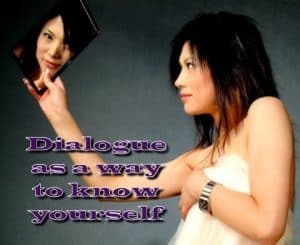
Communicate Better: Dialogue is a tool for self-exploration. It’s not a way to get others to behave, but rather a way to learn about yourself.

Psst!! Hey!!!
Want more great writing designed to help YOU to shift your behaviour?
Want to learn how to find, build or deepen your principal relationship?Want to know more about Zen living and being?Want to learn how to find, build or deepen your principal relationship?
Check out Wayne’s books!!!
I’ve written a ton of articles about communication and dialogue. I’ve focused on how to communicate better in all of my books, and can state categorically that good communication skills are absolutely essential for building and maintaining a relationship.
The key to inner exploration is the willingness to seek out and listen to feedback. Of course, this comes with the caveat that the person you are in dialogue with is worth listening to.

I once worked with a couple with terrible communication. We tried and tried, but they stayed stuck, and eventually separated. She returned periodically for whatever it was we did.
I could never figure it out, because she didn’t absorb much of anything.
She’d let me talk for a bit, then she’d cut me off with:
“I know that!” or“I’d already decided to do that before you said that.”
Pretty much, “I know everything, and it’s so weird that things never work out for me.”
My favourite exchange happened during her last session, which was several months after her separation. She’d called her ex, and it hadn’t gone well.
“I called him to check in on him, and he wouldn’t do what I said! I mean, he never listened to me when we were married, and now we’re separated, and he still won’t listen to me!”
It seemed to be beyond her to “get” the idea that her job was not to educate others–it was to educate herself.
This is the basis of true dialogue.
Let’s face it. Our heads chatter at us incessantly. There are really only three flavours of chatter: information, praise, or blame. The latter two can be sub-divided into self-praise / blame and other praise / blame, but really, the important part to get is that what goes on in our heads is “all us, all the time.”
That said, there is a great appeal to focussing on “the other.”
Of course there is! It gets us off the hook for regulating ourselves. I’m not excusing the bad behaviour of others… I want to remind you that the only behaviour you can modify is your own.
Others are such convenient targets, though!
I remember a client making the decision to stop endlessly criticizing her husband’s every breath. The next week, in she came, full of tales of his misbehavior and her subsequent rant.
I reminded her of her commitment to stop criticizing.
“Well, yes, I did say that, but this was so bad anyone would have jumped down his throat.”
Because… it’s her job or something… I guess.
Not.
Profitable dialogue can be conducted with anyone, anywhere, but really, your job is to find 2 or 3 people you can be “open, honest, and vulnerable” with.
One of those ought to be your principal partner, assuming you are in a relationship.
Of course! Why else would you be in a relationship?
But… you need to understand clearly that the dialogue is not about blaming, correcting, saying something for “his / her” own good.
This is true for all great dialogue, but especially for primary partners. They’re not broken, and you’re not the repair shop.
Here’s a short section on Dialogue from my book, This Endless Moment:

Note: If you want to learn more about this topic, and want to look at it from a Western perspective, have a look at my book, This Endless Moment.
Awareness and presence are the core of all dialogue. Dialogues are special, mostly because so few of us ever have one. Mostly we engage in sequential or simultaneous monologues.
There are only two purposes for dialogue. One is to solve a problem. The other is to share information about the only thing I can share information about—myself.
The opposite of dialogue is fighting. The difference between a dialogue and a fight is the “intent.”
There are one-sided fights and two-sided fights. A one-sided fight happens when one person endlessly corrects and lectures and “persuades,” while the other person says, “Yes, dear.” It’s a “fight” because the recipient has no intention of doing what (s)he has agreed to. You might think of it as bullying and placating.
A two-person fight is always about “who is right.” Which is odd, because, as we’ve noted, there are only personal opinions, wants and desires. It’s like that famous scene in the movie “Annie Hall,” split screen, Woody Allen on one side, Diane Keaton on the other, each talking to their shrink. Woody: “She never wants sex—only 3 times a week.” Diane: “He always wants sex—3 times a week!”
Such discussions are unsolvable, of course, because there is no “right” number of sexual encounters per week. There’s just what’s happening and how I interpret it. Similarly, there is no “right” way to raise a child—there’s just what works. There is no “right” way to communicate—just ways that work and ways that don’t.
Let’s be clear here: a dialogue about an issue and a fight about who is “right” about the issue is not the same thing.
Good dialogue requires the willingness to be direct. Direct communication can be blunt communication. It is always simple communication, noticeably devoid of sub-plots or outside opinions. “Everyone knows…” is not direct. “I think…” is.
People who teach communication at The Haven often use the words “open, honest and vulnerable” to describe good communication or dialogue. They interrelate in several ways, not the least of which is this: I can only be as honest about me as my openness and vulnerability allow.
I’m amazed by how many people think that honesty is a bad thing. It’s sometimes put as a power statement: “I would feel pressured if I had to tell him everything.” Other times, it’s a privacy issue: “I have a right to my secrets.” Or an embarrassment issue: “Well, I couldn’t tell anyone that!” Or, tit-for-tat: “I’m not going to be honest unless she is.” Endless and amazing are the excuses for lying.
Darbella and I have only one “line in the sand” (a standard which, if broken, would mean the end of our relationship) and that is, total honesty. We decided, when we first started dating, and have reiterated with each other since, that honesty is not only the best policy, it’s the only policy.
We want to remind ourselves of the point I made in the section “The Poignancy of the Now.” Our commitment is to total honesty—and I can only be totally honest about what I know today. Thus, I agree with Gandhi, who once said something like, “I promised you the truth (as I know it today), not consistency.”
I hope you begin to see how “truth” can only play out in honest, open, vulnerable dialogue. And the only “truth” I know is the truth of me, in this moment. That truth is totally encapsulated in the stories I tell myself, in the feelings I generate in myself, and in the thoughts I drive myself with. None of this “has to be.” All of this is as I create it.
Openness is the willingness to shine a light on me. If I am open, I am willing to be clear about all aspects of myself. Vulnerability adds to this: I am even willing to admit to the scary, strange, weird, nasty, manipulative parts. I am willing to tell you how I hurt myself. I am willing to risk it because this is what true dialogue, communication and relationship require.
Of course, I get to choose who I am in true dialogue with. Many people come back from one of our Communication Workshops or from The Haven with the idea that they are supposed to be open, honest, and vulnerable, say, with the grocery clerk. This is simply not so. I might choose to be clear and honest with pretty much everyone, but that won’t include sharing my inner theatre with them.
I choose open, honest vulnerability with people I trust to be so with me.
Dialogue is a tool that allows me to pay attention to myself and to share what I discover with a small and select group of friends. The real reason for the dialogue is so that someone else is witnessing what I am doing and thinking and interpreting. Then, when I get off track and lose clarity with myself, my friend(s) can call me on it, typically by asking me why I am making the choice I am making. And I can do the same for them.
Left to our own devices, we pretty much tell ourselves what we want to hear. We can get so wrapped up in the story that we miss what’s “really” going on. Regular, focused dialogue is a discipline designed to commit me to being much more open about the details—the “why” in “why are you telling yourself that story?”
The meaningfulness of what is discussed shifts and changes; the meaning of the dialogue itself remains constant. It is this: in dialogue, I find, listen to and reveal myself. Not for approval or validation. Only I can do that for myself. Dialogue is a way of learning ever again that I am safe being me. I am OK being me.
In the company of friends, dialogue frees us from the burden of being alone. There is, by agreement, acceptance as opposed to “right and wrong,” manipulation and blame. Because, of course, there is no one to blame. There is just this moment and the next, and the story I tell. And if perchance I sadden myself with the story, I can remember Gandhi, and simply tell myself (and my friends) another one. Each equally valid. Each equally “true.”
Because the only mark of the worth of a story, you see, is the result.
Think about setting up a dialogue agreement with no more than 3 people. The agreement is to meet regularly, to take turns describing your “sticking points,” and to listen to your partner(s) as they provide feedback.
No defending, explaining, justifying.
Just listen, and take in. Then, try clarifying your position from a place of gentleness and “non-knowing.” Be curious about yourself and your process, as opposed to trying to justify why you continue to do what does not work.
Have a breath, listen some more, and then, pick something you can test out — some different behaviour — to see what happens.
Then, do it!
September 28, 2020
Fearless Living — 7 Tips
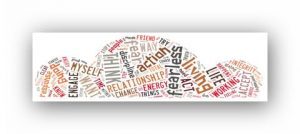
Fearless living: Many people wish to put their fears aside and to create and live a full and elegant life. In Zen, we say this is simple, as in “Simply Sit.” Or, “Pay attention!” Or, “Wake up!”

Psst!! Hey!!!
Want more great writing designed to help YOU to shift your behaviour?
Want to learn how to find, build or deepen your principal relationship?Want to know more about Zen living and being?Want to learn how to find, build or deepen your principal relationship?
Check out Wayne’s books!!!
Introduction to Fearless Living
Many people wish to put their fears aside and to create and live a full and elegant life. In Zen, we say this is simple, as in “Simply Sit.” Or, “Pay attention!” Or, “Wake up!”
The point of these little aphorisms is to bring living into the present moment.
Fearful living disables our ability to act in the here and now. Of course, when you think about it, the fear is totally internal. I fear what I am imagining might happen, and therefore am standing still doing nothing, or doing what I always do.
Fearless living is not reckless. It is both present and prepared. It also recognizes this fundamental truth:
All you can control is the action, not the outcome.
I often describe fearless living as acting with integrity. Integrity with what, you ask? With myself.
Integrity= “I am, I act, I ‘be’, exactly who I say I am.”
Below are some of the bedrock concepts that underpin the fearless life. I’m breaking down the aphorisms above into their components, (like a good little westerner) in order to restate what should be obvious:
The Fearless life is fully enacted, in the moment, and in total harmony with your essence.

1. Respond
It is essential to learn the difference between a reaction and a response. Being a practical guy, I’d remind you that what we are exploring here is what is not working for you. You can safely leave what works alone for now. You can come back later on, and improve upon them.
I define a non-working reaction as “a habit one has that consistently gets them pain, more problems, and exactly the opposite of their intent.”
It’s essence is captured in the famous line, “I get angry and yell, and the situation gets worse, but I just can’t help myself, so I just keep doing it.”
Well, of course you can. Changing a reaction into a response takes time, thought and discipline.
The essential part is to be clear about what you will do.
Most people say, “I’ll just stop yelling.” This is not a strategy, as there is no sense of what will happen in place of yelling.. A strategy is, “Next time I feel myself becoming angry, I’ll have a breath, shut up, and think through a clear and concise response, stating what I want, rather than what I don’t want, without blame.”
One of my friends described it this way: (She’s talking about being silent for a bit, to allow her brain to engage.)
“But [being silent] can let the other person know that you are angry and gives you time to sort out your thoughts so you can properly address the situation and not fly off the handle when you do talk. Sometimes when I get angry, I don’t know why and I need time to think the situation through. I need to think if I’m being rational or am I just being a drama queen and not getting my way. Also, it will give me time to clearly think of what I want to say so that he will understand how I’m feeling.”
Think:
How are my habitual reactions serving me? What am I afraid will happen if I do things differently? What do I really want to accomplish in these situations? What would that look like?
Then: Here is my action plan for this situation.
2. Act
Oddly, and paradoxically, learning to respond, and practicing the response, leads to the response becoming instinctive, and therefore becoming a habitual reaction. In this case, however, it’s a positive one.
To demonstrate this physically to yourself, go to a staircase with a solid banister. Go up maybe five steps, hold the banister, start to walk down, and hold your foot in the air.
Now, think about taking the next step, in terms of what muscles to contract, how to balance.
At least, you should notice how hard it is to put your foot down to the next step.
As a child, this was how it was for you, standing on a step. Then, stepping became instinctual, and this is a good thing.
Practice, practice, practice
It became instinctual because you went to the staircase and practiced. I can’t tell you how many people come full stop when confronted, as in point 1, with changing a habit. as opposed to simply talking about changing. Out come the excuses.
For example, I have lots of clients working on aspects of their relational or sexual lives, and they tell me how much they want it to be different. I propose exercises and techniques, and say, “Go practice.”
Nada. Or Semi-nada.
And oddly, nothing changes.
Action is essential—
and the only way to engage in a fearless life is through consistent, responsive action. My friend, above, will only learn to speak her truth clearly by, wait for it, speaking her truth clearly. She goes on, in her note, to say,
“I understand doing things that way will help to build a stronger relationship and I will try and do that and hopefully he will too.”
If she were here, I’d remind her that the famous Jedi Master Yoda, a real Zen guy, said,

“Do or do not… there is no try.”
In our stair experiment, thinking about walking down stairs is ‘trying’ to walk down. You saw how well that works…
Try means “cop out” and “hedge my bets.” If I try, I can excuse not doing.
So, do.
In other words, act.
With integrity.
Think: what action will move me in the direction I say I want to go? Then, act. Living fearlessly requires constant, integrity based action.
3. Accept
A key concept in fearless living is acceptance.
What we accept is the Taoist concept,
“The way it is, is the way it is.”
I have limited control over externals. Many situations I find myself in are not the result of my actions, and I certainly did not imagine them into being, “The Secret” notwithstanding.
Acceptance is the recognition of the paradox of the truth of both of these concepts: “Shit happens and then you die,” and “total self-responsibility.”
Now let me be clear. You can refuse to accept this, and stomp your little feetsies and scream about how “It’s not fair!” And you may even be right. But get this: no one ever said this was a fair universe. It is neither fair nor unfair. It just is.
How Zen.
Denying the reality of reality changes nothing. You just become whiny and miserable.
So, start right now, accepting that fearless living is about you being in charge of you. Acting fearlessly, out of integrity, is for your benefit and to accelerate the depth of your spirit.
It is not a technique you implement to manipulate others into doing life your way. If you try that, you’re just swapping one form of manipulation for another.
That being said, fearless, integrity-based living does seem to create few waves. I suspect that this is so because so few people are actually out there living in this way. Most people are ducking their heads and hoping the problems and pain will disappear by magic.
A friend recently fired her mother. Their relationship was highly dysfunctional. My friend decided to stop this game. She made it for a month. A week or so ago, she resumed having ‘tea’ with her mother.
Yesterday, she said, “I have to figure out a way to sneak valium into my mother’s tea.” I made a comment about arsenic being simpler and only requiring one application.
 © Zohar Lazar
© Zohar LazarWhat my friend won’t accept is that the mother she has is the mother she has. She wants her mom to change into the mom she wants to have. Fearless acceptance would be, This is my mom, and I choose not to spend time with her.” Or “This is my mom and I accept her as she is.”
Just a reminder—
No matter how elegantly you live your life, people will have adverse reactions to your living fearlessly. They will annoy themselves with what you say and do. They will try to get you to “behave the way you used to.”
Laugh, don’t bite, and move on.
Think: how is my refusal to accept the reality of my reality causing me to live with fear, uncertainly and no action? What ways can I use to remind myself to act with courage and clarity, all the time, and to let what happens be what happens?
Remember: if you act out of response-able, thoughtful clarity, you are doing the best a human can. From this place, you can fearlessly deal with whatever situation crosses your path.
4. The Focus of Fearless Living
If you aim at nothing, you will hit it.
Mastery of life requires focus. If, for example, your goal is ‘healthful, peaceful, centered living,’ life becomes simple. I weigh my next action against my focus. If it fits, I act. If not, I choose another action, or do not act at all. (The action of chosen inaction.)
The e‑mail correspondence I mentioned above started with my friend describing a situation she was in with her boyfriend, and saying
“… so he doesn’t think that I am a push over and can get away with treating me like dirt.”
I replied by suggesting she tell her boyfriend what she does want, and to do what she wants from him as she engages with him. (i.e. “I want total honesty in our relationship, so I am totally honest with you, no matter what you are doing.”)
What she was doing was stating what she doesn’t want:
a) to be a push over, and
b) to be treated like dirt.
When you think about it, if someone told you that, how would you assume they wanted to be treated? Honestly, you would have no clue.
Yet, this is what passes for conversation in most relationships, and it’s why so many fail. I wrote:
“Dar and I have only one relationship rule—total honesty. We set that up back when we first started dating seriously. It keeps things simple. We do as we choose to, and keep each other completely informed. It’s not about permission giving, as only I can determine what I will do, and the same for Dar.
So, I’d suggest you sit down with the bf, and say, “So, I’m angry that I didn’t set up a ground rule with you. Last night, I had an expectation that you were serious about meeting me, and if you changed your mind, that you would let me know. From now on, I’ll commit to letting you know how I am doing, where I’m going, and what’s up for me. If this relationship is going to work, I will expect the same from you.
In other words, total honesty.
Now, of course, that means that you have to state what you are thinking and feeling as things occur to you, as that’s part of being honest.”
Think: what is my focus for my life, my career, my relationships? How clear am I about stating what I do want, as opposed to whining about what I don’t want? Do I ‘do what I say I want,’ or am I waiting for someone else to ‘go first?’
Commit to discovering, then stating, then enacting your truth, fearlessly and with integrity.
5. The Discipline of Fearless Living
I use the word discipline to mean commitment, not punishment. I’m not into beating myself into submission through blaming or judging.
Discipline is about relentlessly engaging in what you say is important to you, while relentlessly letting go of what does not work.
Remember, fearlessness is not the absence of fear, nor the absence of fearful events. Fearlessness is decisive, focused, clear action in the face of fear. If I leave myself with an ‘out,’ I will surrender to my fears, sit down, become small—every time.
“Do that which you fear to do, and the fear will die” — Ralph Waldo Emerson
Our culture has replaced discipline with distraction. If you look unblinkingly into the face of the world, it’s a pretty scary place out there. You then get to choose. You are either a warrior or a patsy.
The patsies choose addictions to avoid the discipline of action— drugs, alcohol, meaningless relationships, endless TV or sports or gambling. Anything to numb and distract.The warrior, in the Zen tradition, makes his/her lifework the elegant application of their skill set, for the betterment of their grasp of the here and now.
If you know the enemy and know yourself, you need not fear the result of a hundred battles.
If you know yourself but not the enemy, for every victory gained you will also suffer a defeat.
If you know neither the enemy nor yourself, you will succumb in every battle.— Sun Tzu
Life, I think, is a battle.
It’s a battle between yielding to the easy, numb, mindless ways of reactive living, as opposed to the discipline, clarity, honesty, vulnerability, and efficient action of responsive being.
Those with a disciplined heart and mind are not swayed or driven off-point. And with practice, this staying of the course seems almost effortless.
In Zen, this is called effortless effort.
Think: what do I use to distract myself from my fears? How disciplined am I? Am I willing to commit to a path, a way of being, for this lifetime? If so, define the path and walk it, no holds barred!
6. Engagement through Fearless Living
Fearlessness requires engagement with life and with ourselves. Often, we are more than willing to show the world what we assume is our ‘good side,’ while tremulously hiding what we think is bad. My friend wrote:
” I know I need to work on the being open thing with him. I am sometimes afraid to show who I am just in case he doesn’t like the real me. Maybe because it is new and I still want to impress him. But that gets tiring. I am who I am and nothing will change that. I can only grow as a person and hope that he can grow with me.”
She’s right on all counts.
Ben Wong and Jock McKeen used to say,
“Change isn’t possible. Choice always is.”
They mean that we are who we are, even (and especially!) the parts we try to hide.
Jung called the hidden stuff the “Shadow Material.” It’s the stuff society forced us to repress. It’s our petty, mean side, our angry, hateful side, our murderous rage. And no, this isn’t about expressing this stuff. It’s about owning it.
I need to engage with all of myself.

Back when I did Phase 1 at The Haven, we did some Shadow Work. In a visualization, I saw a samurai dressed in full armour. (Sorta the guy in the movie “Dragon”—Bruce Lee’s Demon…)
The samurai swung his sword at my head. Just before it bit in he stopped it, and turned its hilt toward me. He said, “You can kill, or you can heal.”
I realized that I had feared this “killing” energy, and had repressed it for a decade. I also realized I could embrace it, and engage with it, and use it to ‘heal.’
The Shadow Side contains the energy for excellence. It’s been pushed down there, under the influence of admonitions to ‘be innocuous, duck your head, drug yourself, and don’t be a bad girl/boy.’ This energy sits inside of us, dormant.
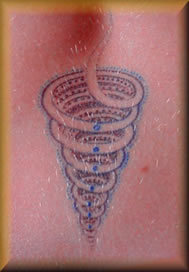
In Kundalini yoga, it’s described as a snake, coiled at the root Chakra, waiting to emerge by uncoiling and moving upward along the spine. In this way, the energy moves into the world.
I must be willing to accept and engage all of myself—my emotions, my drives, my energy, and my purpose.
Think: what aspects of your self do you judge to be bad, messy, nasty, awful? How much energy do you expend trying (but failing) to keep this stuff down? How does it emerge, seemingly ‘out of control,’ as you relate? What would it look like to incorporate the energy of your full being into yourself, and to act from a perspective of disciplined wholeness?
Remember: fearless living is whole living, and the energy for fearless action is always shadow energy!
7. Celebrate Fearless Living

Describe to me a celebration that is not a here-and-now experience. An imagined party is a pale version of the real thing. In all my years, the only celebrations I have had were ones I actually attended.

I often find myself stopping what I am doing and staring into Darbella’s face.
I have this deep feeling of gratitude and joy and sadness (that this will not last forever—and that would be me going non-present…) and respect and passion for her. I am in a sense celebrating my relationship with her.
With some people, I feel no celebration at all, but rather a burden.
A friend wrote to me a while ago that she’s engaged in a ‘cleaning out’ exercise. I wrote a series about that not so long ago. She’d cleaned out her body, which led to her cleaning out her apartment, (I highly recommend this… when we moved last time, we threw out 16 pickup truck full of ‘junk.’) she then decided to clean out her relationships:
” …and eventually to a stock-taking of the relationships in my life and where I am investing my energy with a view to eliminating what depletes me and expanding what feeds me.”
I would call that cleaning out a celebration to the nth degree.
Far too many of us drag people and objects and internal dramas around like deadwood. We are morose and unfocussed and in need of a good cleaning out. It’s the stuff stuffed in a sack we drag around after us.
Eventually, you realize that the stuff you tie yourself to defines you, and weighs you down.
Think: how can I make my life into a celebration? What am I grateful for? How do I shift things around so that I let go of what is not working, relevant, or helpful? How can I then move to a place of deep reverence and gratitude for who I am, who I associate with? And finally, how can I live the fearless life, fully engaged with ‘the whole catastrophe,’ with gratitude, serenity, passion and strength?
September 16, 2020
The Dance of Shadow and Light

The Dance of Shadow and Light is where the juice is. Here, we discover the interplay of presence and action. Learn to let go of rules, and live!

Psst!! Hey!!!
Want more great writing designed to help YOU to shift your behaviour?
Want to learn how to find, build or deepen your principal relationship?Want to know more about Zen living and being?Want to learn how to find, build or deepen your principal relationship?
Check out Wayne’s books!!!
One way artists achieve “three dimensionality” is to create the illusion of depth through the interplay of shadow and light.
 shadow and light are what creates depth
shadow and light are what creates depthA painting featuring nothing but light would be a white canvas; a picture displaying nothing but darkness would be a black canvas.
I’m sure the National Gallery in Ottawa would be glad to pay a couple of million for either (Canadian joke—the gallery bought a red canvas for several million a couple of years ago … ) but looking at either leads nowhere.
Black and white thinking, on the other hand, seems to be quite popular.
You know the drill.
The way I see it is true. All other versions are false. I’m right, you’re wrong. Your beliefs are immoral, I’m the pillar of morality.
Just a Note! Back in 1994, My first book, Stories From the Sea of Life was published. It’s now out of print, BUT is available as a pdf file. If you’d like to read more of the stories contained therein, amble over to my book site, The Phoenix Centre Press. Once there, subscribe to the site’s mailing list, and you’ll get the pdf for FREE!
I wrote a story about black and white thinking in my out of print book, Stories From the Sea of Life:
I had a few counselling sessions with a young woman, while I was counselling at a local University. She was mostly concerned with her sex life, which was not turning out as she had planned.
We discussed it at length, because there was no depth. She was in her first year, and she wanted to be in an adult relationship, and be loved. So, she had been picking up men in campus bars. She’d see a guy, think he was cute, start a conversation and end up in his bed. Or hers. The few men that hung around past morning rapidly lost interest in her, or started cheating on her. In bars.
We discussed the possibility that men in bars, on average, were not there looking for a woman to marry. They were looking for a one night stand. She thought she should be able to change their mind. She agreed, after a bit, that maybe context and location was important. After all, you don’t buy lumber at plumbing stores.
By the next session, she reported she’d managed two weeks without going to a bar. This, she thought, was good, but she said that this had diminished her chances for an adult relationship. So, she had joined the campus Liberal Party.
She had gone to a rally. She had bumped into a guy who was cute. They talked, had a sandwich. They went back to the rally. He stood behind her. His hands wandered into her clothes. She thought, “I’ve found true love!” She took him to her room. They had sex. He hadn’t been back since the next morning.
I asked her why she’d consented to sex on the first date, with a stranger.
She replied, “Because I’m a Liberal.”
I said, “Pardon me???!!!”
She said, “If you’re a Liberal and someone asks you for sex, you have to say yes. You obviously don’t understand.”
She then explained sex and relating to me, because I was obviously too stupid to get it.
“I want to be in an adult relationship, as obviously, I’m in University, and therefore should be in relationship. I want it now, and the best way to get a guy for the long-term is to have sex with him.”
I pointed out that this hadn’t yet worked.
“I just need to find the right guy! There’s new bar in town…”
End of therapy.

Note: If you want to learn more about this topic, and want to look at it from a Western perspective, have a look at my book, This Endless Moment.
This particular young woman only came for therapy three times, and quit because I couldn’t see that she had no choice.
If a man wanted to have sex with her, she had to say yes.
When having sex with guys she picked up in bars caused her pain, rather than examining the core belief, she joined a political party and invented a rule that “Liberals always have sex when asked.”
A subtle move, this. She went from personal choice to an inflexible rule to a party mandate. In so doing, she freed herself from responsibility for her actions—her personal responsibility for her sex life was nil. If she got really desperate, she could blame booze.
Notice how one dimensional her approach to sex and relating is.
This is what happens, always, when we have a rigid rule—the rules in a black and white universe are both simple and absolute; they just don’t work.
When a rule fails, black and white thinkers blame others for the failure, as in our story above.
“I want to rule this out”
This can mean,
a) placing a ruler under a line, and striking the rule through, or
b) crafting an absolute rule—but notice—if I rule something out, what I don’t have is “what to do now.” I just have, “What not to do.”
Black and white thinking is what people younger than 12 do.
You tell kids the following story: “A man’s children are starving, so he steals some potatoes to feed them.” Then you ask them if what he did is “right or wrong.” Young kids will condemn the man for stealing.
Teens, on the other hand, will note the extenuating circumstances and say something like, “Stealing is wrong, but in this case he was trying to keep his kids alive, which is a good thing.”
Being able to see shades of gray is one mark of being an adult.
It can be more difficult when it’s personal. When we “take things personally,” we lock into one way of seeing things, situations, people, groups. Blaming others happens when we take things personally; we conveniently forget that the only person’s behaviour we can do something about is ourselves.
Letting go of black and white thinking is not a prescription for no beliefs.
When confronted with a seemingly insurmountable obstacle, or when our behaviour gets us undesirable results over and over, the wise person begins to look for other ways of acting and thinking.
Spending your life waiting for others to change so you don’t have to is a prescription for waiting forever.
The life well lived has three dimensions. It is alive, vital and vibrant. It begins with a palate of colour wider than one or two. It deepens, and it finds its depth at the interplay of darkness and light. In the gray. In the tones and hues and varieties. In flexibility and in balance.
This week, look at the tone of your life. The blacks, whites, grays. See how often you can broaden the palate.
September 5, 2020
Better relating — 6 Ideas
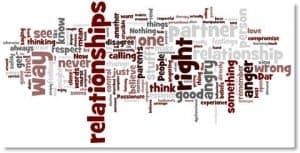
Better relating — Of all the ways to Deepen Relationships, here are 6 of my favourites

Psst!! Hey!!!
Want more great writing designed to help YOU to shift your behaviour?
Want to learn how to find, build or deepen your principal relationship?Want to know more about Zen living and being?Want to learn how to find, build or deepen your principal relationship?
Check out Wayne’s books!!!
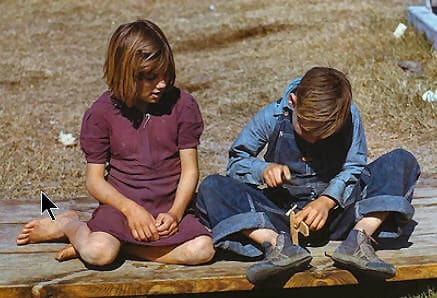 And when we grow up, I’ll spend all my time making you a better person!
And when we grow up, I’ll spend all my time making you a better person!Hey! Stop playing with that stick and listen to me!
I suspect that most folk do not examine their relationship—except when things are off the rails.
There’s a tendency to think
that relationships are supposed to “just work,” andthat the purpose of finding a partner is to have someone there to magically meet your needs.
Nothing could be further from the truth.
To quote David Schnarch, in “Passionate Marriage,” a primary relationship is a crucible. In other words, the heat of the relationship is the “thing” that makes the crucible’s contents pure. Thus, in the heat of dialog and passion, the couple enters into a proving and refining ground that makes each person more “him or herself.”

This is decidedly different from the norm. The norm is all about a battle for superiority and “rightness.” People in stuck relationships tend to believe that there is only one way to see things, only one view of the world, one view of how to relate, etc.
And coincidentally, that correct view is held by the person espousing it!
Almost no one in a dysfunctional relationship is saying, “Your way is the right way.” No, emphatically they are saying, “My way is the right way.”
I do not believe in “right” ways. I believe in personal growth, and this is best fostered in the crucible, the heated container, of intimate relationship.
The thing I love best about my relationship is that Darbella sees right through me and my games, and chooses to hang around with me anyway. And vice versa.
I can’t remember the last time something I said or did surprised her, and vice versa. She knows me. And she calls me on my stuff. And vice versa. This is the basis of our relationship.
1. In good relationships, there is redirection to what’s really going on—we describe this as “calling each other out.”
Calling out is not criticizing or “making wrong.”
“Calling each other on our stuff” is helping each other to snap out of dreamland, so that each of us pays attention to the story we are spinning.
Example: Someone says, “My spouse really makes me angry.” I would ask, “Why do you choose to anger yourself over your spouse?”
Now, this shifts everything. It helps the hearer shift into a place of becoming responsible for his / her feelings.
The initial statement, on the other hand, can only open a discussion about the supposed flaws of the spouse, as perceived by the speaker.
This can have only a couple of purposes:
1) to get agreement that the spouse is a jerk, or2) to get sympathy.
Neither is particularly helpful.
Deciding that another person is “making you angry” is silly, and changes nothing either about the other person or the situation.
Most stuff we anger ourselves over is the same stuff we always anger ourselves over. Someone does “x” and I decide that this behaviour disagrees with my fantasy about what the person ought to be doing. So, I blame the other person for not cooperating with my fantasy, then I make myself angry.
Calling someone out when they use non-responsible language, (for example) involves not biting on provocative statements, not joining in on blaming, but simply inviting one’s partner to correct their language.
Once I remember I am angering myself over something that is out of my control (the behaviour of another,) I might be moved to let it go, or to select a behaviour that I can take, as opposed to simply blaming.

Note: If you are not in a relationship, and want to do a much better job finding a partner that suits you, have a look at my book, Find Your Perfect Partner. You’ll find the tools you need to engage your brain!
2. In good relationships, there are no secrets.
 Mask? What mask?
Mask? What mask?Who I am, how I am, and what I am feeling and thinking must be made available to my partner. And I mean the direct experience.
A client once described getting angry with her husband. “So I spent the next several hours telling him how angry I was.” I asked her if she actually got angry, as in yelling, stomping about. She crossed her arms over her chest, and crossed her legs tightly, and said, “I’m not interested in going there.”
Expressing anger directly follows the pattern of # 1, above.
Say, “I am angering myself,” not “you make me angry.”
Then go ahead and pound a pillow or stomp about.
The anger is enacted as a clear statement of, “This is what I saw (heard) from you, and I am angering myself, and I want to yell a bit before I process it.”
We express our emotions appropriately, directly, and safely. We are then able to move on. Repressed emotions always come back to haunt you.
After all, talking about anger without learning to safely express anger (or any other emotion, of course) is like the difference between describing an orgasm and having one.
In good relationships, the filters and the evasions are set to “off.”
At the same time, and this is essential, I am completely self-responsible. I admit to creating my experience, my interpretations and my feelings, and I don’t attempt to hide any of it. A primary relationship is the place to be fully alive, and part of being alive is enacting all of our feelings—not just the “fun” ones—safely and directly .
3. In good relationships, both people are respectful of the personhood, beliefs, and essence of their partner.
The key here is respect, (high regard, admiration.) That this is not the norm in most relationships is obvious.
No matter how it is described, most relationships are about control.
By control, I mean that one or both of the partners attempts to force or manipulate their partner into doing life their way.
Force is, “Unless you… I’ll punish you by…” Manipulation is, “If you do this… THEN I’ll do that…”
Respect is, “Hmm. You see it this way and I see it that way. Interesting.”
The piece I’ve never understood is the arrogance of thinking that, just because I’m married to, or in relationship with someone, that somehow this gives me the right to change that person.
And at the same time, I think that the other person has absolutely no right to expect me to change. Because I, of course, am right, and (s)he is wrong.
Respect for personhood — this is my way of saying that my partner is whole and complete as she is, and also remains whole and complete as she changes with time. In other words, she is as she is, and how she is is something I choose to find delightful.
Respect for beliefs — I still laugh at “discussions” Dar and I have had over buzzy topics like family members, education, therapy, etc. There are wide differences in our perspectives, and neither of us will budge. I know that I want her to think like me, because I argue so hard. However, at the end of the day, what Dar believes is what she believes, and it’s the same for me.
Respectful of essence — each of is here, I believe, to fulfill a personal destiny or purpose. Our skill set, our way of being, is intrinsic, and lies just under the surface, gently tugging us to get on with it. This essence is the truth of us, and again, I’m amazed at how many people think it is their right to demand that their partner change their essence.
Respect is only possible if I am willing to accept my partner as (s)he is. To do this, I have to drop my desire to teach, lecture or control.
4. In good relationships, there is no right and wrong. There is acceptance and cucuriosity.

Well, it certainly seems like there is right and wrong.
You may bump your nose against an, “I don’t enjoy doing that” scenario, and that’s OK. There’s nothing wrong about the thing you do not enjoy, and it is your right to not do it. Getting into the judgment game proves nothing, as your belief about right and wrong is only and always about you.
Acceptance and curiosity, on the other hand, open doors. You get the opportunity to explore and attempt, and even if you decide to only do something once, you’ve grown with the experience.
Most people I know actually aren’t very adventuresome, and really don’t push their boundaries and limits very much at all, and it seems odd to me that, given how little experimentation they do, they have so many opinions about stuff they’ve never tried.
I say, “If you are afraid of something, do that next.”
Being open to new possibilities, while dropping the judgement is the best way to deepen a relationship.
5. Good relationships are engaged, passionate relationships.
Passionate engagement is the willingness to stick your neck out so that your partner sees the real you.
Mostly, people hide.
They seem to think that their partner, the person they are supposed to be the most intimate with, should never see the “truth” of them. They stuff their anger, hide their passions, and walk around carefully, lest they ruffle any feathers.
We propose active engagement.
By this I mean letting Dar know exactly and completely where I stand, what’s up for me, and what I am feeling. All the time.
We do this by practicing total honesty.
Sure, sometimes I make myself uncomfortable telling her what’s up for me, but I know the danger of keeping that stuff to myself.
Now remember, this revelation is being done in the context of the above points.
I am not being passionately honest in order to change Dar, or manipulate her into doing something. I am being revealing to let her know more about me, and in this way, to deepen our intimacy.

Note: And if your present relationship needs work, well… check out The. Best. Relationship. Ever. It’s my relationships book… you’ll find all the help you need!
6. In good relationships, there is no compromise.
Compromise never works.
If I compromise, I tend to only think about what I gave up. So, when Darbella and I disagree, we sit down, and we talk, and we stay with it until both of us can agree with our decision, 100%.
In other words, we are not 3‑year-olds; we do not stomp our feet and demand that we get our way. We are adults, and we come to consensus.
Not always easy, but I only remember 2 times in 38 years that it’s taken us longer than an hour.
Because we are not playing games.
Period.



